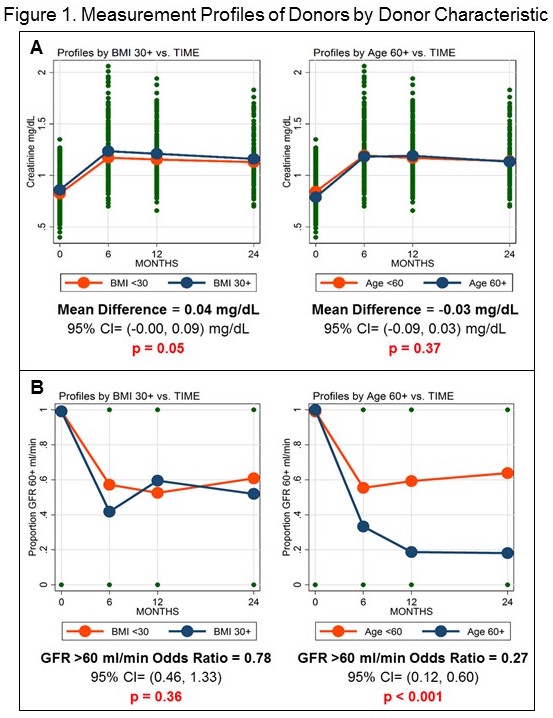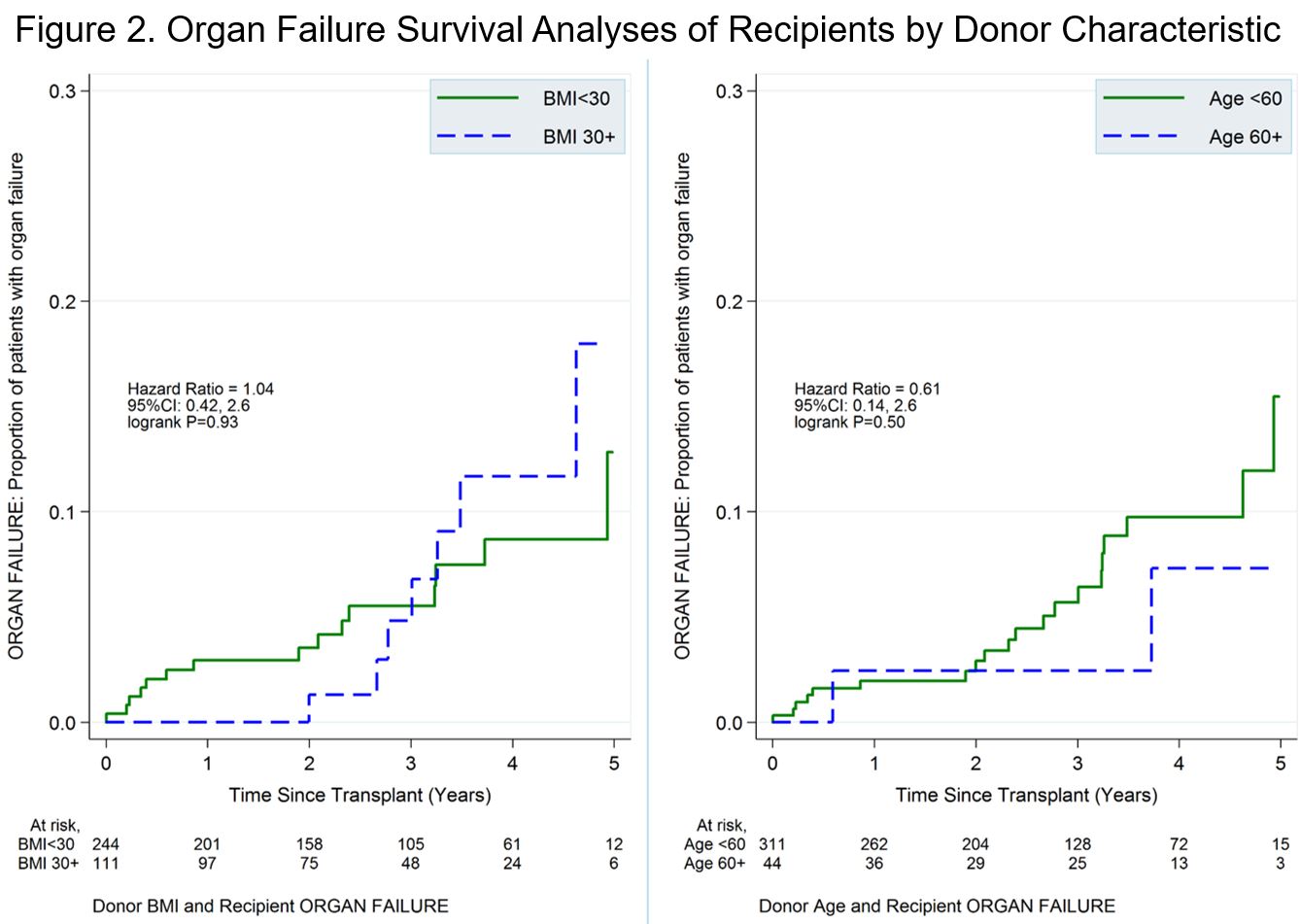Increasing the Kidney Donor Pool by Expanding Limits on Body Mass Index and Age: A Single-Center Evaluation of Safety for Donors and Recipients.
Surgery, University of Maryland School of Medicine, Baltimore, MD
Meeting: 2017 American Transplant Congress
Abstract number: C81
Keywords: Elderly patients, Kidney transplantation, Weight
Session Information
Session Name: Poster Session C: Donor Management: All Organs
Session Type: Poster Session
Date: Monday, May 1, 2017
Session Time: 6:00pm-7:00pm
 Presentation Time: 6:00pm-7:00pm
Presentation Time: 6:00pm-7:00pm
Location: Hall D1
Using donors with advanced age or elevated body mass index (BMI) could increase the number of live donor kidney transplants. Our aim was to evaluate the safety for both donors and recipients when people with elevated BMI or advanced age are donors. We conducted a retrospective cohort study of 393 donor-recipient pairs who underwent transplantation at our center between 2011 and 2015. Donors and recipients were followed for up to two and five years, respectively. Comparing donors with high BMI (≥30 kg/m2, n=121) with donors with lower BMI showed that trends over time in serum creatinine (mg/dL) differed statistically (p=0.05) but the mean difference over time (MDT) in creatinine between the donor BMI cohorts was small (MDT=0.04, 95%CI=[0.00, 0.09]). Trends in the incidence of eGFR >60 ml/min in the high vs. low BMI cohorts did not differ statistically (Odds Ratio (OR)=0.78, 95%CI=[0.45, 1.33], p=0.36). The cohort of older donors (Age≥60, n=50) did not differ statistically from younger donors in trends of serum creatinine (MDT=-0.03, 95%CI=[-0.09, 0.03], p=0.37) but the trends in proportion of donors with an eGFR >60 ml/min over the course of follow-up was significantly lower among older donors (OR=0.27, 95%CI=[0.12, 0.60], p<0.001). Recipient outcomes were assessed using Kaplan-Meier analysis and Cox regression, which showed comparable graft failure hazard ratios (HRs) for recipients regardless of donor BMI (high vs. low; HR=1.04, 95%CI=[0.42, 2.60], p=0.93) and donor age (old vs. young; HR=0.61, 95%CI=[0.14, 2.60], p=0.50). For transplants performed at our center recipients had similar outcomes whether donors had higher BMI or older age. Both BMI and age donor cohorts had similar post-donation trends in creatinine, but the older donor cohort experienced a trend towards impaired eGFR gauged by proportions with eGFR >60 ml/min.

CITATION INFORMATION: Tonascia J, Yi S. Increasing the Kidney Donor Pool by Expanding Limits on Body Mass Index and Age: A Single-Center Evaluation of Safety for Donors and Recipients. Am J Transplant. 2017;17 (suppl 3).
To cite this abstract in AMA style:
Tonascia J, Yi S. Increasing the Kidney Donor Pool by Expanding Limits on Body Mass Index and Age: A Single-Center Evaluation of Safety for Donors and Recipients. [abstract]. Am J Transplant. 2017; 17 (suppl 3). https://atcmeetingabstracts.com/abstract/increasing-the-kidney-donor-pool-by-expanding-limits-on-body-mass-index-and-age-a-single-center-evaluation-of-safety-for-donors-and-recipients/. Accessed December 14, 2025.« Back to 2017 American Transplant Congress
